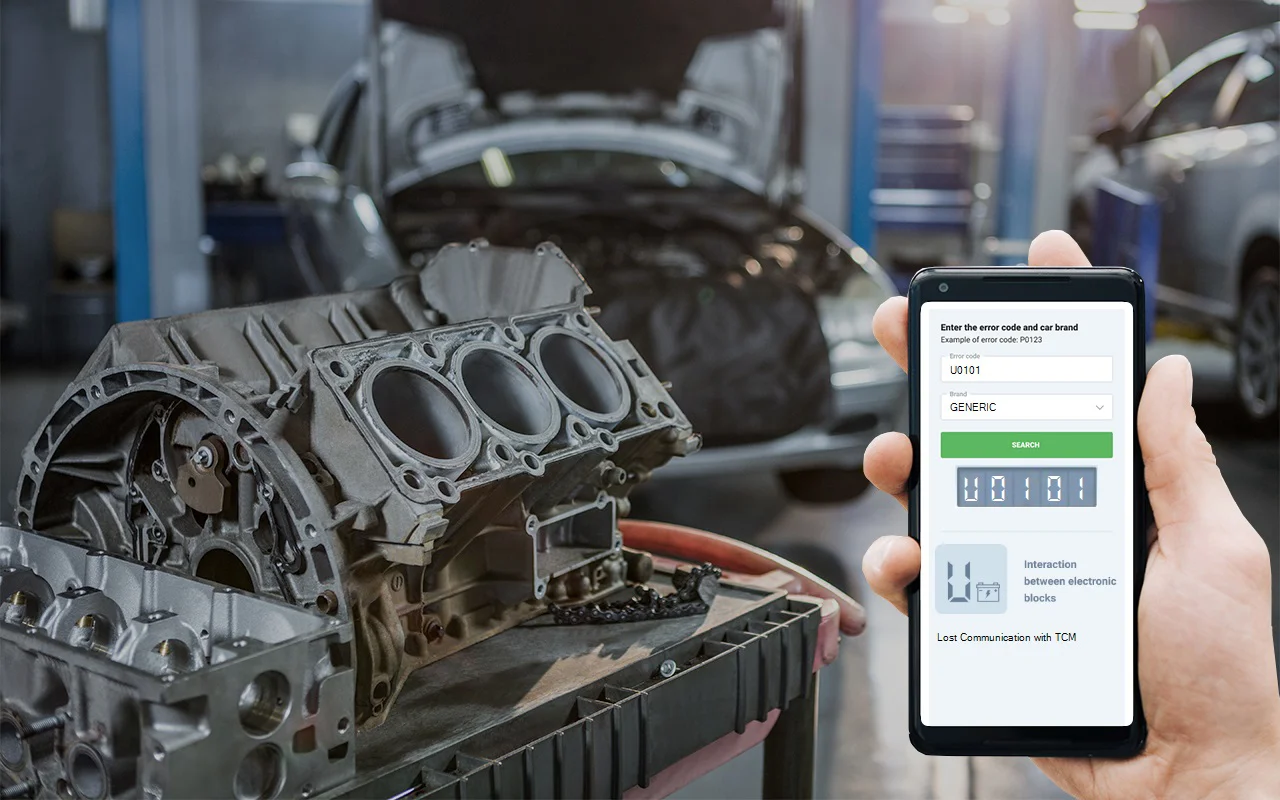Let me break down what U0101 means for you. This code stands for “Lost Communication with Transmission Control Module (TCM).” Basically, your car’s computers-like the engine and transmission modules-talk to each other over a special network called the CAN bus. When the main computer (PCM) can’t get a response from the TCM for a certain amount of time, it sets this code. The TCM is in charge of shifting gears and making sure your transmission runs smoothly. If it goes silent, the whole system can get confused, and that’s when you start seeing problems. This network is essential for your car to run right, so when communication breaks down, it can affect not just shifting, but other connected systems too.
DTC U0101
Causes of obd2 code U0101
From what I’ve seen in the shop and based on official repair info, there are a handful of usual suspects when it comes to u0101. Most often the issue is one of these:
- A dead or weak battery-sometimes it’s as simple as that.
- A faulty TCM-either it’s failed completely or it’s having intermittent issues.
- Problems with the wiring or connectors to the TCM-corrosion, loose pins, or damaged wires can break the connection.
- Issues with the CAN data bus itself-like a short, open, or poor connection somewhere along the network.
In cases like this, it’s usually a wiring or power issue, but I’ve seen all of these pop up. Don’t overlook the basics before jumping to conclusions.
Symptoms of U0101 trouble code
If your car’s got a eobd dtc u0101, here’s what you’ll probably notice. The check engine light will almost always come on. You might feel the transmission acting up-like rough or delayed shifting, or the car might get stuck in one gear (usually second or third), which is called limp mode. Sometimes the gear indicator on your dash (PRNDL) goes blank or acts weird. In some cases, you might even find that a scan tool can’t talk to the TCM at all. From experience, if the problem is intermittent, you might just see the check engine light with no other symptoms-at least at first.

Diagnosis of U0101 code
Here’s how I usually tackle a dtc u0101, step by step. First, I always start with the basics: check the battery and make sure it’s fully charged and the terminals are clean and tight. A weak battery can cause all sorts of weird electrical issues. Next, I inspect the fuses related to the TCM-sometimes a blown fuse is all it takes to lose communication. After that, I move on to the wiring and connectors at the TCM itself. I look for corrosion, bent pins, loose connections, or any signs of water intrusion. It’s best to have someone help you wiggle the harness while you watch for changes. If everything looks good there, I’ll check the CAN bus lines for continuity and shorts-this can get a bit technical, but it’s important. I also use a scan tool to see if I can communicate with the TCM or if it’s totally offline. If other modules are also not communicating, that points to a bigger network issue. Don’t forget to check for technical service bulletins-sometimes there’s a known fix from the manufacturer.

Common Mistakes with U0101 engine code
Honestly, one of the biggest mistakes I see is people jumping straight to replacing the TCM without checking the basics-like battery voltage, fuses, or wiring. Another common slip-up is not checking for corrosion or loose pins at the connectors. Skipping a thorough inspection of the CAN bus wiring can also lead you down the wrong path. I’ve even seen folks overlook a simple dead battery and spend hours chasing their tails. Always start simple before you get into the expensive stuff.

Seriousness of obd code U0101
This is not something you want to ignore. Losing communication with the TCM can leave your car stuck in limp mode, unable to shift properly, or even unable to move at all. That’s a serious hazard, especially if it happens while you’re driving. If left unchecked, you risk damaging the transmission or other electronic modules. Things can go south quickly if overlooked, so don’t put this off for later. The risks just aren’t worth it.
Repair steps for U0101
From what’s proven in the field and backed by OEM procedures, here’s what usually fixes a dtc u0101 chevrolet, dtc u0101 toyota, or other vehicles (this error can also happen on this car brand Ford, Renault):
- Charge or replace the battery if it’s weak or dead.
- Repair or replace any damaged wiring or connectors at the TCM.
- Replace blown fuses related to the TCM circuit.
- Address any CAN bus wiring faults-repair shorts, opens, or poor connections as needed.
- If the TCM itself is faulty after all other checks, replace and program it as required by the manufacturer.
- Check for and follow any relevant technical service bulletins (TSBs) for your vehicle-sometimes there’s a software update or known fix.
It’s best to follow the diagnostic steps in order, so you don’t end up replacing parts you don’t need.
Conclusion
To sum it up, U0101 means your car’s main computer can’t talk to the transmission control module, and that’s a big deal for how your vehicle runs. It’s usually caused by simple things like a bad battery or wiring, but can also point to a failed TCM or network issue. Don’t ignore this code-it can lead to serious drivability problems and even damage your transmission. The most reliable way to fix it is to start with the basics: check the battery, fuses, and wiring, then move on to the TCM and network if needed. Acting quickly and methodically is the best way to keep your car safe and running right.




